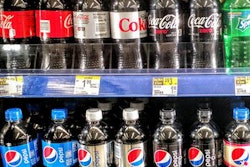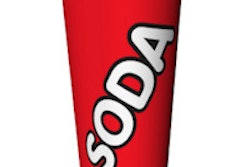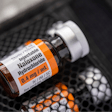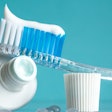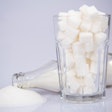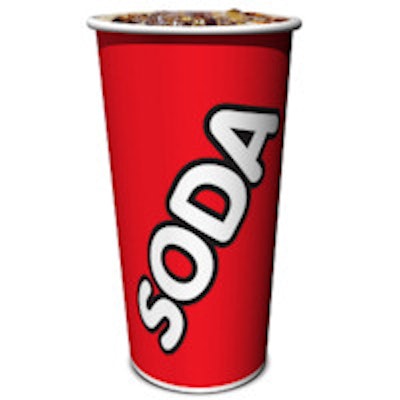
The chemical mix of acids in sugar-free soft drinks and sports drinks can cause as much dental erosion as sugared sodas, according to researchers in Australia. Consumers should be made aware of this problem, they noted.
Researchers from the University of Melbourne Oral Health Cooperative Research Centre tested eight sports drinks for their impact on tooth enamel. All but two of the drinks caused significant enamel surface loss and enamel surface softening. As a comparison, researchers also tested a major cola brand and bottled spring water. While the cola produced the highest amount of surface loss, both the cola and the majority of the sports drinks caused enamel hardness to decrease by 30% to 50%, the researchers found. They published their findings in a briefing paper (November 26, 2015).
Growing popularity
As consumers become more aware of the links between high sugar intake and obesity, diabetes, and dental caries, they are becoming increasingly health-conscious in their choice of beverages and snacks. Beverage and candy manufacturers have responded with a variety of new "sugar-free," "low-sugar," and "healthy" products, such as colas and sports drinks.
 Eric Reynolds, PhD, is director of the Melbourne Dental School in Australia. Image courtesy of the University of Melbourne.
Eric Reynolds, PhD, is director of the Melbourne Dental School in Australia. Image courtesy of the University of Melbourne."Most people are unaware of dental erosion until diagnosed, and they appear unaware/surprised that it can be related to frequent consumption of acidic sugar-free drinks," lead researcher Eric Reynolds, PhD, told DrBicuspid.com. "There is definitely a perception that because the drink is sugar-free that it is safe for teeth."
Reynolds is a laureate professor and the director at the Melbourne Dental School at the University of Melbourne and also CEO and the director of research at the Oral Health Cooperative Research Centre.
Soft drink companies are now producing iced teas, vitamin drinks, and soft drinks marketed as "diet" or "zero-calorie" products. Candies, lozenges, fruit chews, and mints also are now available in sugar-free varieties.
Although the link between sugar and dental caries is widely recognized, dental erosion is less well-known and is caused by some foods and beverages that are perceived to be healthy by consumers.
"However, consumers should be aware that many sugar-free products remain potentially harmful to teeth due to their chemical composition," according to the researchers.
Many adolescents are showing signs of dental erosion from energy drinks and sugary beverages, according to a recent presentation by Warden Noble, DDS, at the California Dental Association's CDA Presents 2015 meeting in August. Notably, more than 30% of U.S. adolescents now have some dental erosion and more severe wear, Noble said.
Dental erosion, pH levels
Sugary beverages, especially energy and sports drinks, drastically lower the mouth's pH levels, leaving teeth vulnerable to demineralization and caries, Dr. Noble noted. The normal pH level of saliva is 6.8%, and the longer there are low pH levels on teeth, the more vulnerable they become to demineralization and caries. Beverages with pH levels below 5.5 are comparatively acidic. This includes soft drinks, sports drinks, energy drinks, fruit juices, cordials, and wine, the Australian researchers said.
However, pH level is only one indicator of erosive potential, they noted. The mix of chemicals in foods or beverages also determines whether it is erosive. Some chemicals, such as citrate, are chelators that bind or trap other chemicals such as calcium. These chemicals are particularly erosive because they effectively remove calcium from teeth, the researchers said.
Phosphoric acid is mainly found in colas, while citric/citrate is found mainly in lemon- and lime-flavored drinks, the researchers said.
The Australian researchers tested the erosive potential of 15 beverages commonly sold in Australian school cafeterias, including three sugar-free soft drinks. All drinks were tested on extracted human molars free of dental caries.
| Enamel surface loss & enamel hardness change after exposure to beverages | ||||
| Brand | Flavor | Enamel surface loss* | Surface softening* | |
| Liquids | Mount Franklin | Spring Water | No detectable change | 8 |
| Coca-Cola | Original | 3.22 | -178 | |
| Gatorade | Lemon Lime | 2.00 | -188 | |
| Powerade | Black Currant | 1.59 | -155 | |
| Powders | Gatorade | Lemon Lime | 2.50 | -116 |
| Powerade | Black Currant | 1.18 | -99 | |
"It was surprising that when we analyzed some of these drinks we found high levels of citric acid and phosphoric acid, and the combination of these two food acids when consumed frequently can cause dental erosion," Reynolds said.
The study found that both the sugar-containing and sugar-free soft drinks produced significant erosion of the dental enamel, with teeth showing measurable weight loss and surface loss.
"There was no significant difference between the erosive potential of sugared and nonsugar soft drinks," the researchers concluded.
Labels are misleading
Dental researchers have become concerned about a potential link between sports drinks and dental erosion, with a 2014 study showing higher than average rates of erosion among athletes, thought to be possibly associated with sipping sports drinks during times of lower saliva levels during and after exercise (British Journal of Sports Medicine, September 28, 2014).
The Australian study found that most of the products analyzed were potentially erosive, indicated by measurable softening and loss of tooth enamel and a reduction in healthy mineral levels in saliva.
"If the U.S. is experiencing the same high prevalence of erosion as we see in Australia, then the public should be made aware of this problem," Reynolds told DrBicuspid.com. Raising public awareness was the major purpose of the briefing paper, he added.





